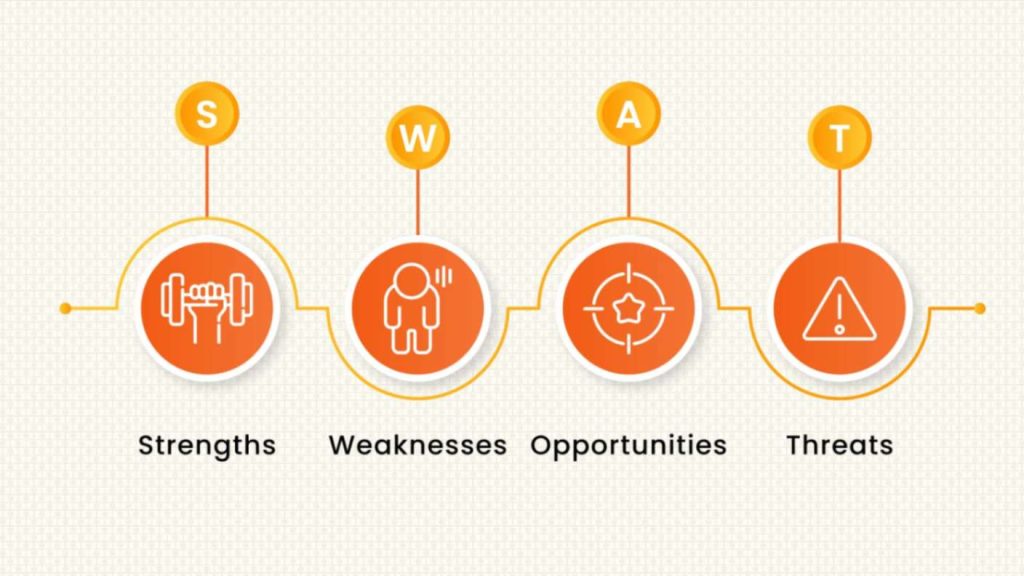The mobile app market is booming. With over 7.4 billion smartphone users globally, as reported by Statista, the competition to capture user attention and downloads has never been fiercer. In this dynamic landscape, success hinges on a crucial first step: thorough mobile app market research.
Conducting thorough market research for your mobile app idea isn’t just a recommendation; it’s a necessity. It equips you with the knowledge and insights to navigate the competitive landscape, understand your target audience, and ultimately, develop an app that resonates with users and stands out from the crowd.
In essence, mobile app market research empowers you to make data-driven decisions throughout the development process, increasing your chances of building a successful app in this ever-evolving mobile landscape.
Why is Mobile App Market Research Important for Success?
Imagine investing significant time and resources into developing a mobile app, only to launch it and discover minimal user interest. This scenario, unfortunately, plays out all too often for businesses that overlook the critical role of mobile app market research.
So, why exactly is market research essential for your app’s success? Here are some key benefits:
1. Reduced Risk
By understanding the market landscape, competitor offerings, and user needs, you can identify potential roadblocks and refine your app concept before significant development resources are committed. This proactive approach significantly reduces the risk of launching an app that fails to gain traction.
2. Validation of Ideas
Market research acts as a reality check for your app idea. Through research methods like user surveys and competitor analysis, you can validate if your concept addresses a genuine user need and has the potential to resonate within the target market.
3. Identifying Market Gaps
Effective market research goes beyond simply understanding your competitors. It empowers you to discover unmet user needs or gaps in the existing app offerings. This allows you to develop an app that fills a crucial niche and offers a unique value proposition to users.
4. Building a Winning App Strategy
In-depth market research provides the foundation for crafting a winning mobile app strategy. By analyzing user data, competitor strengths and weaknesses, and current market trends, you can make informed decisions about your app’s features, functionalities, monetization strategy, and overall user experience.
Types of Mobile App Research
Mobile app market research can be broadly categorized into two primary approaches: secondary research and primary research. Each method offers distinct advantages and plays a crucial role in uncovering valuable insights for your app.
1. Secondary Research
Secondary research is a time-efficient and cost-effective way to gather a wealth of information about the mobile app market. It involves utilizing existing data and resources compiled by research firms, industry analysts, and even social media platforms. Here are some valuable sources for secondary research:
- Industry Reports and App Market Data: Reports from reputable firms like Sensor Tower and Data.ai offer valuable insights into current market trends, app download statistics, and user demographics.
- Mobile App Usage Statistics: Platforms like Statista and eMarketer provide comprehensive data on user behavior, app usage patterns, and mobile device trends. This data helps you understand how users interact with apps in your target category.
- Social Media Listening Tools: Social media platforms like Twitter and Facebook are treasure troves of user opinions and discussions. Tools like Brandwatch and Sprout Social can help you track conversations about relevant apps and identify user pain points and preferences.
- Competitor App Reviews and Ratings: Reading reviews and ratings of competitor apps in your target category provides valuable user feedback. Analyze recurring themes and identify areas where existing apps fall short to discover potential opportunities for your own app.
2. Primary Research
While secondary research offers a solid foundation, primary research allows you to delve deeper and gather user-specific insights. This method involves directly collecting data from your target audience through various techniques:
- User Surveys and Polls: Online surveys and polls are efficient ways to gather feedback from a large sample size. Tools like Google Forms and Typeform allow you to create targeted surveys to gauge user interest in your app concept, identify preferred features, and understand user pain points.
- In-Depth User Interviews: Conducting in-depth interviews with potential users allows for a more nuanced understanding of their needs, motivations, and app usage habits. This personalized approach uncovers valuable qualitative data that can significantly shape your app’s development.
- Focus Group Discussions: Moderating focus groups with a targeted group of users fosters lively discussions and brainstorming sessions. This method allows you to observe user interactions, gauge reactions to app concepts, and gain valuable insights into user preferences.
By strategically combining both secondary and primary research methods, you can develop a comprehensive understanding of the mobile app market landscape, your target audience, and the potential for your app’s success.
Best Strategies for Mobile App Market Research
Having explored the different research methods, let’s delve into the best strategies for conducting effective mobile app market research in 2024. Here are some key steps to ensure you gather the most valuable insights:
1. Know Your Target Audience

In the world of mobile apps, there’s a golden rule: if you don’t know who you’re building for, your app is unlikely to resonate with anyone. This is where understanding your target audience becomes the cornerstone of successful mobile app development.
Why is knowing your target audience so crucial?
Simple. It ensures your app directly addresses the needs and preferences of a specific user group. Let’s explore some key reasons why:
- Focused Development: By clearly defining your target audience, you can focus your app’s development on features and functionalities that cater directly to their needs. This ensures your app offers a valuable solution to their specific problems or fulfils their desired experience.
- Effective Marketing: Understanding your target audience’s demographics, psychographics (attitudes, values, and interests), and app usage habits allows you to develop targeted marketing campaigns that reach the right users with the right message.
- Enhanced User Experience: By tailoring your app’s design, user interface, and content to your target audience’s preferences, you create a user experience that feels intuitive and engaging.
How do you identify your target audience for mobile app research?
- Demographics: Consider factors like age, gender, location, income level, and occupation to create a profile of your ideal user.
- Psychographics: Understanding your target audience’s interests, hobbies, values, and lifestyle choices allows you to tailor your app to their broader needs and aspirations.
- Existing App Usage Habits: Research the types of apps your target audience currently uses and how they interact with them. This helps you identify potential gaps in the market and opportunities for your app to offer a unique value proposition.
By investing time and effort into understanding your target audience, you gain invaluable insights that guide every stage of your mobile app development process, ultimately leading to a successful app launch and a loyal user base.
2. Analyze Your Competitors

The mobile app market is a competitive battlefield. To carve out a niche for your app and achieve success, you need to understand the competition. Here’s where competitor analysis comes into play as a crucial element of your mobile app market research.
Why Analyze Your Competitors?
Analyzing your competitors offers a wealth of insights that can significantly strengthen your mobile app development strategy. Here’s how:
- Identify Key Players: The first step is to identify the main competitors in your target market category. Analyze their app features, functionalities, and overall user base to understand their strengths and weaknesses.
- Evaluate Features and Functionalities: By dissecting your competitors’ apps, you can discover valuable features users appreciate and identify areas for improvement. This allows you to build an app that offers a unique and compelling value proposition.
- Analyze App Store Presence: Explore how your competitors present their apps in the App Store or Google Play Store. Analyze their screenshots, app descriptions, and user reviews to understand how they position themselves and how users perceive their offerings.
- Learn from User Reviews: User reviews are a goldmine of valuable insights. Analyze user feedback on your competitors’ apps to identify recurring complaints, feature requests, and overall user sentiment. This allows you to address potential shortcomings in your own app and cater to unmet user needs.
Building a Competitive Advantage Through Analysis
By conducting a thorough competitor analysis, you can leverage the learnings to build a strategic advantage for your app. Here’s how:
- Differentiate Your App: Understanding your competitors allows you to identify gaps in the market and develop features that set your app apart. This differentiation is crucial for attracting users and establishing a strong brand presence.
- Refine Your App Concept: Competitor analysis can reveal areas where you might need to refine your app concept to better address user needs or compete more effectively within the market.
- Inform Your Development Strategy: The insights gleaned from competitor analysis can directly influence your app development strategy. You can prioritize features, optimize user experience elements, and make informed decisions about your app’s overall functionalities.
Note: Competitor analysis is not about copying your rivals; it’s about learning from them and using those insights to build a better app. By conducting a comprehensive analysis, you gain a deeper understanding of the competitive landscape and pave the way for the success of your own mobile app.
3. Leveraging Social Media
Social media have become a powerful tool for mobile app market research. These platforms offer a real-time window into user behavior, opinions, and discussions about existing apps, industry trends, and potential app ideas.
Here’s, how you can leverage social media to gain valuable insights for your mobile app:
- Identifying User Trends and Pain Points: Social media platforms like Twitter and Reddit are hubs for user discussions and complaints. By actively listening to these conversations, you can identify recurring user pain points, frustrations with existing apps, and emerging trends within your target market. This allows you to develop an app that addresses these unmet needs and offers a more satisfying user experience.
- Gauging User Sentiment: Social media sentiment analysis tools can help you understand the overall user perception of existing apps in your target category. By analyzing the tone and emotions expressed in user reviews and discussions, you can gauge user satisfaction and identify areas for improvement within the competitive landscape.
- Discovering Potential App Ideas and Features: Social media can be a breeding ground for innovative app ideas. By following relevant hashtags, industry influencers, and user discussions, you can discover potential app features and functionalities that resonate with your target audience. This can spark inspiration for your own app concept and ensure it caters to the evolving needs and desires of users.
Utilizing Social Media Listening Tools:
Manually monitoring vast social media conversations can be time-consuming. To streamline the process, consider leveraging social media listening tools like Brandwatch or Sprout Social. These tools allow you to:
- Track mentions of relevant keywords and hashtags related to your target market and app category.
- Analyze user sentiment and identify positive and negative feedback about existing apps.
- Gather valuable demographic data about users engaging in relevant social media conversations.
By strategically incorporating social media listening into your mobile app market research approach, you gain a real-time pulse on user preferences and industry trends. This allows you to develop an app that is not only relevant but also speaks directly to the evolving needs and desires of your target audience.
4. Conducting a SWOT Analysis

Having gathered valuable insights through various research methods, it’s time to translate those learnings into a strategic roadmap for your mobile app development. This is where a SWOT analysis comes into play.
A SWOT analysis is a strategic planning framework that helps you identify your app’s:
- Strengths: Internal factors that give your app an advantage over competitors. This could include innovative features, a strong development team, or a unique selling proposition.
- Weaknesses: Internal factors that hinder your app’s potential. This might involve limited development resources, a complex user interface, or a lack of marketing expertise.
- Opportunities: External factors that present potential benefits for your app. This could include emerging market trends, a growing user base for your target audience, or potential partnerships with other companies.
- Threats: External factors that pose challenges to your app’s success. This might involve fierce competition, changes in user behavior, or technological advancements that render your app obsolete.
How Does a SWOT Analysis Benefit Your Mobile App?
By conducting a thorough SWOT analysis, you gain a comprehensive understanding of your app’s position within the market landscape. Here’s how it empowers your mobile app development strategy:
- Identifying Areas for Improvement: Analyzing your weaknesses allows you to identify areas where your app can be improved to become more competitive and user-friendly.
- Capitalizing on Opportunities: Understanding external opportunities allows you to leverage them to your advantage. For example, if you identify a growing market trend, you can tailor your app’s features to cater to that specific need.
- Mitigating Threats: Recognizing potential threats allows you to develop strategies to minimize their impact on your app’s success. For instance, if fierce competition is a threat, you can focus on building a strong brand identity and highlighting your app’s unique features to stand out from the crowd.
Note: A SWOT analysis is not a one-time exercise. As your mobile app market research evolves, and the market landscape shifts, revisit your SWOT analysis regularly to ensure your app development strategy remains aligned with current trends and user needs.
By effectively utilizing a SWOT analysis, you can transform your market research insights into a clear roadmap for building a successful mobile app that thrives in a competitive environment.
Conclusion
Thorough mobile app market research is not just a suggestion; it’s an essential first step to achieving success. By strategically combining secondary and primary research methods, alongside competitor analysis, social media listening and SWOT analysis, you gain invaluable insights into your target audience and current market trends.
This knowledge empowers you to develop an app that resonates with users, addresses their needs, and stands out from the crowd. Remember, successful mobile apps are built upon a foundation of deep user understanding and a strategic development plan.
Ready to transform your app idea into a reality? Digimonk Solutions, a leading mobile app development agency, offers comprehensive market research and development expertise to help you navigate the competitive mobile app landscape. Contact us today to discuss how we can help you craft a winning mobile app strategy!

